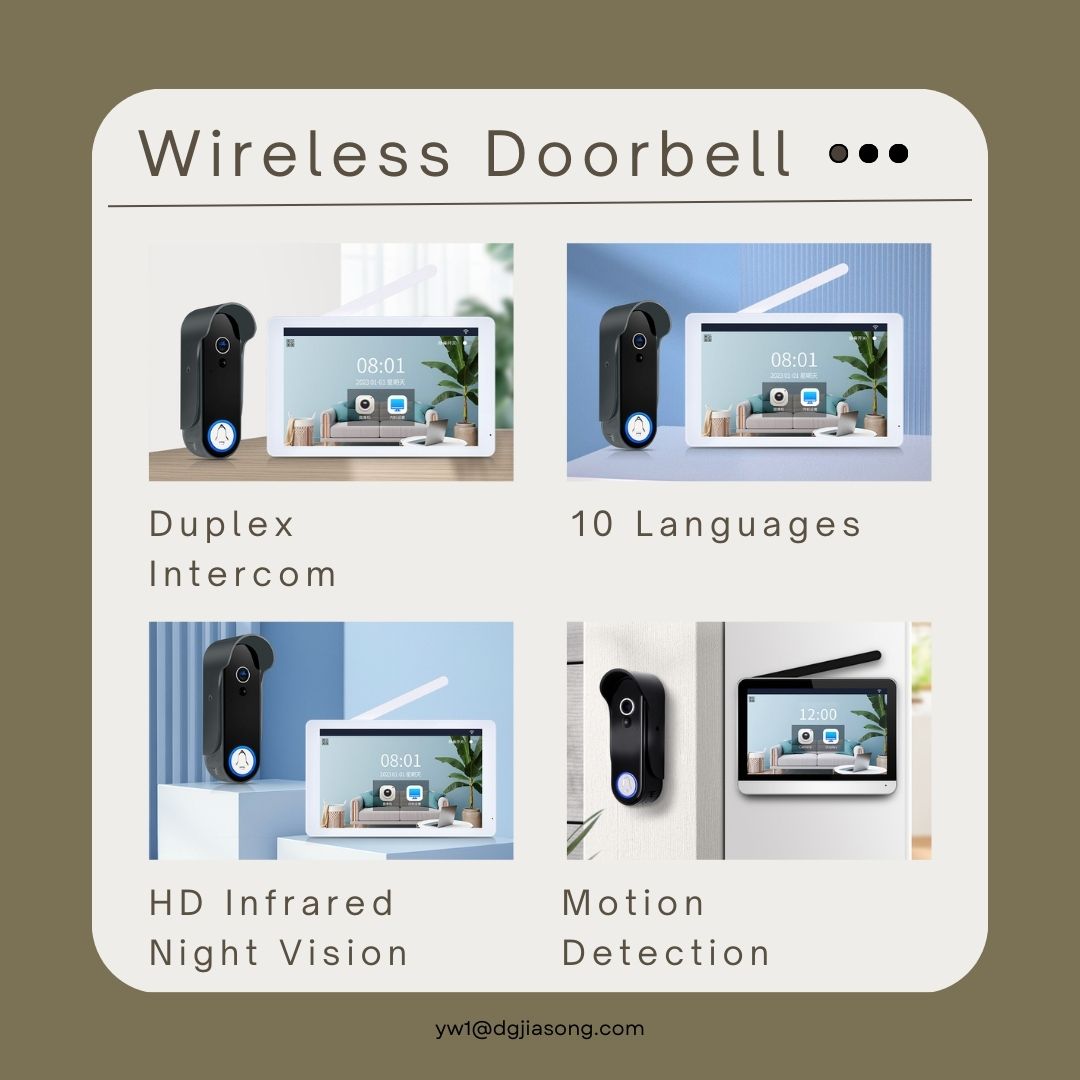Wireless Video Doorbell: A New Chapter in Technological Innovation and Smart Security
Time:2024-08-23 17:26:47 ?? Views:33

Amidst the thriving era of smart homes, the wireless video doorbell, as a pivotal component of the home security system, is profoundly reshaping our residential experience with unparalleled convenience, efficiency, and intelligence. This article delves into the core technological highlights of the wireless video doorbell—including its dual-band 2.4GHz and 5GHz Wi-Fi connectivity, advanced signal encoding and compression technology, intelligent optimization mechanisms, and strategies to ensure network connection stability—revealing the technical intricacies and practical values behind it.
I. Dual-Band Wi-Fi Connectivity: Flexible Adaptation for Seamless Communication
Technical Analysis
Our wireless video doorbell innovatively supports both 2.4GHz and 5GHz dual-band Wi-Fi connectivity, catering to the diversity of home network environments. The 2.4GHz band boasts wider coverage, ideal for environments with strong wall-penetration capabilities and stable signals. In contrast, the 5GHz band excels in high-speed transmission and low latency, perfect for scenarios demanding superior video quality or cleaner network environments. This dual-band compatibility allows users to flexibly choose based on their actual needs, ensuring smooth video streaming.
Practical Application
With simple configuration, users can seamlessly connect the wireless video doorbell to their home Wi-Fi network, regardless of whether it's 2.4GHz or 5GHz. This enables remote monitoring convenience from anywhere in the house or across the globe, allowing users to view real-time footage outside the door and engage in clear conversations with visitors through mobile apps or indoor monitors, significantly enhancing the intelligence of home security and convenience of daily life.
II. Signal Encoding and Compression: Efficient Transmission for Clear Vision
Technical Analysis
Facing the challenge of transmitting massive video data, our wireless video doorbell employs industry-leading video encoding and compression technology. Smart algorithms remove redundant information from videos, such as repeated pixels in consecutive frames and optimized color information, significantly reducing data transmission volumes while minimizing quality loss during compression. Additionally, the system automatically adjusts encoding parameters based on real-time network conditions, ensuring a perfect balance between video quality and network bandwidth.
Practical Application
This technological advantage is particularly evident in practical applications. Even in low-bandwidth or high-latency network environments, users can still enjoy clear and smooth video footage. Whether dealing with signal interference in tall urban buildings or limited network coverage in remote areas, our wireless video doorbell maintains stable and usable video transmission through optimized encoding and compression strategies, fortifying home security with a solid defense.
III. Intelligent Optimization Mechanism: The Guardian of Network Environments
Network Adaptability
Our wireless video doorbell features an integrated intelligent network optimization mechanism, another standout feature. This mechanism automatically detects the current network environment, including signal strength and network congestion levels, and intelligently adjusts transmission strategies accordingly. Upon detecting network changes, such as signal weakening or bandwidth constraints, the system promptly responds by automatically lowering video quality or adjusting transmission frequencies to maintain a stable connection.
Dynamic Adjustment
Beyond adaptability to network environments, our wireless video doorbell boasts robust dynamic adjustment capabilities. The system continuously monitors network bandwidth and latency, dynamically adjusting video transmission bitrate and framerate accordingly. This fine-grained control strategy ensures optimal video transmission performance even with limited network resources. For instance, during peak hours or network congestion, the system automatically reduces video bitrate to minimize network resource consumption while maintaining video stream fluency.
IV. Network Connection Stability: The Cornerstone of Secure Protection
Stable Network Environment
To ensure the stability of the wireless video doorbell's network connection, we recommend creating a reliable network environment. Firstly, using a wired connection for the router enhances network stability and reduces latency. Secondly, flexibly choosing between 2.4GHz and 5GHz bands based on home network environments and device requirements is crucial. Lastly, strategic placement of home network devices avoids signal dead zones or interference.
Avoiding Interference
To mitigate interference from other wireless devices, users can adopt several measures. For instance, adjusting the doorbell's installation position to be far from potential sources of interference like microwaves and wireless routers; using physical means like signal shields or metal enclosures to reduce interference; and regularly checking and updating home network devices to ensure optimal performance.
As a leader in the smart home sector, our wireless video doorbell, with its dual-band Wi-Fi connectivity, advanced signal encoding and compression technology, intelligent optimization mechanisms, and strategies to ensure network connection stability, is continuously propelling the development of home security systems towards greater intelligence, convenience, and efficiency. We firmly believe that with continuous technological advancements and improvements, future wireless video doorbells will serve every household with even greater intelligence, efficiency, and security, offering users a more peaceful and convenient living experience.
Chinese Website——http://516ip.cn/